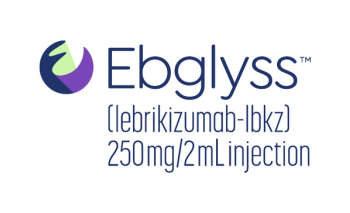
- MHE June 2023
- Volume 33
- Issue 6
Patients Often Lose Out in the Tug of War Between Pharma and PBMs
PBMs have imposed accumulators and maximizers to counteract pharma’s copay assistance programs. Drug manufacturers have retaliated by reducing the amount of patient assistance available.
Note: This story was previously published on the Formulary Watch website.
Brooke Loving has been diagnosed with von Willebrand disease, but she doesn’t take the medication that would keep her blood disorder under control. Because of the cost, she has made the decision to focus on making sure her children have the medications they need instead.
Loving and three of her eight children have been diagnosed with von Willebrand disease, which is a bleeding disorder characterized by low levels of von Willebrand factor, a protein that helps blood clot. Two of Loving’s children take Humate-P, a von Willebrand factor/factor VIII replacement therapy. It’s expensive, but CSL Behring GmbH, Humate-P’s manufacturer, offers copay assistance of $10,000 a year.
In previous years, Loving says they would use the copay card when it counted toward their out-of-pocket deductible. “When that ran out, our portion was about $300 a week,” she adds.
But Blue Cross and Blue Shield of Alabama, Loving’s insurance company, and the pharmacy benefit manager (PBM) Express Scripts changed their policy and have implemented a program in which the copay assistance doesn’t count toward the family’s deductible. (The family’s specialty pharmacy is Accredo.) So Loving and her family decided not to use the copay assistance anymore. The family has a high-deductible plan through the employer of Loving’s husband: $9,100 for an individual and $18,200 for the family, the out-of-pocket maximums set by the Affordable Care Act.
“We needed to meet the deductible to assist with all the other appointments and meds we utilize as a family,” she says. “Originally, we thought it would make more sense (not to use copay assistance), but this may have been an uneducated decision. I didn’t — still don’t — feel I understand any of this mess. It should be simple.”
Now her daughter Katy’s most recent copay was $5,000 for four weeks of medicine. “I can count numerous times where we’ve had to pick between getting groceries for the week or doing a treatment,” says Loving. “Unfortunately, in the last six months, I was (also) hit with the fact that I had made a bad mom choice.” Loving is referring to the fact that she didn’t immediately take her 9-year-old son, Kason, who has von Willebrand disease, to the doctor when he complained about shoulder pain after he had fallen on the playground. “We were not educated to know and listen to some of the cues, and we did not treat my son because treating him would be costly,” she says.
It’s a ‘mud fight’
Over the past several years, PBMs have implemented restrictions that make patients such as Loving and her family responsible for more of the cost of specialty medications.One such restriction that has impacted Loving’s family is called a “copay accumulator,” which prevents copay assistance from counting, or accumulating, toward the family’s deductible. Accumulator programs shift costs to patients, and critics say these programs amount to double dipping because the plan is getting both the value of the copay and the patient deductible.
“In November 2016, we noticed some benefit changes to one plan around copay assistance and it not accumulating toward a patient’s out-of-pocket deductible,” says Kollet Koulianos, MBA, who until recently was the vice president of payer relations at the National Hemophilia Foundation. “We knew then that there would be severe unintended consequences for both the patient and self-funded plans.”
Since then, copay accumulator programs have become common. According to a 2023 report from The AIDS Institute, at least two-thirds (64%) of health plans in the country include a copay accumulator policy. PBM accumulator programs combined with high-deductible health plans have put many patients with chronic diseases in a difficult position.
The three largest PBMs — CVS Caremark, Express Scripts, and OptumRx, which control about 80% of the market — use accumulator programs. A spokesperson for OptumRx said the program is not new and was introduced nearly five years ago. CVS Caremark and Express Scripts did not respond to requests about their programs. But CVS executives in 2018 said copay cards encourage the use of more expensive therapies by negating the impact of higher cost-sharing tiers on member out-of-pocket cost, and Express Scripts said, also in 2018, that a copay accumulator helps level the playing field.
Also growing is the use of “maximizer” programs, which classify a subset of specialty medications as “nonessential.” This allows these programs to operate outside the Affordable Care Act’s requirements related to maximum out-of-pocket limits. These programs maximize patient use of manufacturers’ copay assistance programs by limiting the PBM’s exposure to specialty drug costs. The proportion of patients with commercial health insurance taking drugs for autoimmune illnesses in plans with maximizers has more than tripled, from 4% to 14%, since 2019, according to December 2022 report on accumulators and maximizers by IQVIA, a clinical research and drug industry analytics company.
Now pharmaceutical companies are pushing back against these PBM efforts to limit patient assistance, and some have begun lowering the total amount of assistance given to patients through copay cards when accumulator or maximizer programs are in effect.
“It’s a basically a mud fight between drug manufacturers and the insurers and pharmacy benefit managers,” says Geoffrey Joyce, Ph.D., director of health policy at University of Southern California (USC) Leonard D. Schaeffer Center for Health Policy & Economics and chair of the Department of Pharmaceutical and Health Economics and an associate professor at USC School of Pharmacy in Los Angeles. “In the case of accumulators, it doesn’t benefit the patients. All of this is between the manufacturers and the insurers. And each wants a bigger piece.”
Less assistance
One example of a company lowering the value of its assistance is CSL Behring, which produces Humate-P, the therapy that Loving’s family takes. Although the terms for the copay assistance don’t specifically use the word “accumulator,” they do say that patients whose insurance policy imposes limitations on copay assistance are not eligible.
CSL Behring isn’t the only pharmaceutical company to change the terms of its copay cards when insurers have accumulator programs. AbbVie, for example, has lowered the annual maximum that patients can receive from copay cards. For its blockbuster autoimmune drug Humira (adalimumab), the company has lowered its patient assistance program from $14,000 a year to $4,000 a year if a patient’s plan has an accumulator program. The company has also slashed assistance for Rinvoq (upadacitinib) from $14,000 to $6,000 if the patient is in a health plan with an accumulator or maximizer program.
Janssen Biotech Inc. is another company that has lowered the ceiling on copay assistance for patients covered by plans with accumulators, which limits copay cards for patients with accumulator plans for Stelara (ustekinumab), a medication for a variety of autoimmune conditions. Patients now have a limit of $6,000 annually for its $5-a-dose Stelara withMe savings program.
For its cancer therapy Yondelis (trabectedin) and pulmonary hypertension treatment Tracleer (bosentan), Janssen doesn’t specifically mention accumulator programs but says on its websitethat the “cost support is meant solely for patients — not health plans and/or their partners.”
CSL Behring, AbbVie and Janssen did not respond to questions about their lower levels of patient assistance.
Matthew Gibbs, Pharm.D., president of Capital Rx, a smaller PBM, says that he sees these efforts to lower copay assistance as a veiled threat to PBMs that have accumulator programs. “They’ll never admit this, but it’s probably tied to their global rebate contracting: ‘If you want a rebate on this drug, you can’t be doing this activity.’ Also, this (limiting of assistance) is not on all products. It’s for specific products, which implies they want to continue to drive market share on their drugs.”
All of this leaves patients stuck in the middle between two large healthcare players. Patients often don’t know whether their insurance includes an accumulator program. And if their insurance does, they might not understand its implications for copay assistance.
About 70% of people with multiple sclerosis have relied on patient assistance programs at some point, an indication that patients struggle with affording medications for the disease, says Bari Talente, executive vice president of advocacy and healthcare access for the National Multiple Sclerosis Society.
“Copay accumulators hurt patients,” she says. “People with high healthcare costs are stuck in the middle of fights between PBMs/insurers and pharmaceutical manufacturers. While they continue to try and outmaneuver each other, patients are the ones facing the very real consequences.” Gibbs disagrees, saying that accumulators don’t hurt patients: “At the end of the day, patients are still paying way less than they would have.”
Dea Belazi, Pharm.D., M.P.H., president and CEO of AscellaHealth, a specialty pharmacy, says the conflict between pharma and PBMs over copay assistance is another instance of the pharma-PBM checks and balances.
“This battle of pharma versus payers has been going on forever,” he says. “But this also creates a balance (so that) both sides of the table will be checking on each other. Until we figure out a better model, you want both pharma and PBMs on the opposite (ends) of the table, duking it out.”
In Sarah Emond’s opinion, copay programs are a symptom of the problems created by high list prices for drugs. “The goal of cost sharing and accumulators was originally to incentivize patients to choose cost-effective, effective, lower-cost options,” says Emond, M.P.P., executive vice president and chief operating officer at the Institute for Clinical and Economic Review, a cost-effectiveness analysis organization in Boston. “But the problem comes in when they are applied to drugs with no other options. They are not incentivizing any value-based purchasing behavior because patients don’t have a choice.”
The December 2022 IQVIA report noted that drug coverage with accumulator programs doubled for autoimmune therapies and cancer drugs between 2019 and 2022. The IQVIA report says that in 2021, 43% of covered lives in commerical plans had coverage that included an accumulator.
Lawmakers have taken notice of accumulators. According to Avalere Health, laws in 16 states and Puerto Rico require any payment or discount to be applied toward a consumer’s annual out-of-pocket cost-sharing requirement, a rule designed tothwart accumulators. At the federal level, the Help Ensure Lower Patient Copays Act that was introduced earlier this year in the U.S. House would require health plans to count copay assistance toward cost sharing. Patient, provider and consumer organizations representing a wide range of illnesses support the bill, and in February, 29 organizations signed a brief in support of a Pharmaceutical Research and Manufacturers of America lawsuit against the Department of Health and Human Services for prohibiting copay assistance to people with Medicare coverage.
Denise Myshko is senior editor of Formulary Watch, a website affiliated with Managed Healthcare Executive.
Articles in this issue
over 2 years ago
Coping With the Ozempic-Wegovy-Mounjaro Tsunamiover 2 years ago
Some Lessons Learned Around Alternative Payment Modelsover 2 years ago
Reality Check on Alternative Payment Methodsover 2 years ago
What Does Pear Therapeutics’ Bankruptcy Mean for PDTs?over 2 years ago
The NASH Cupboard, Now Bare, Has Two CandidatesNewsletter
Get the latest industry news, event updates, and more from Managed healthcare Executive.






















































